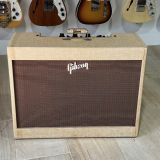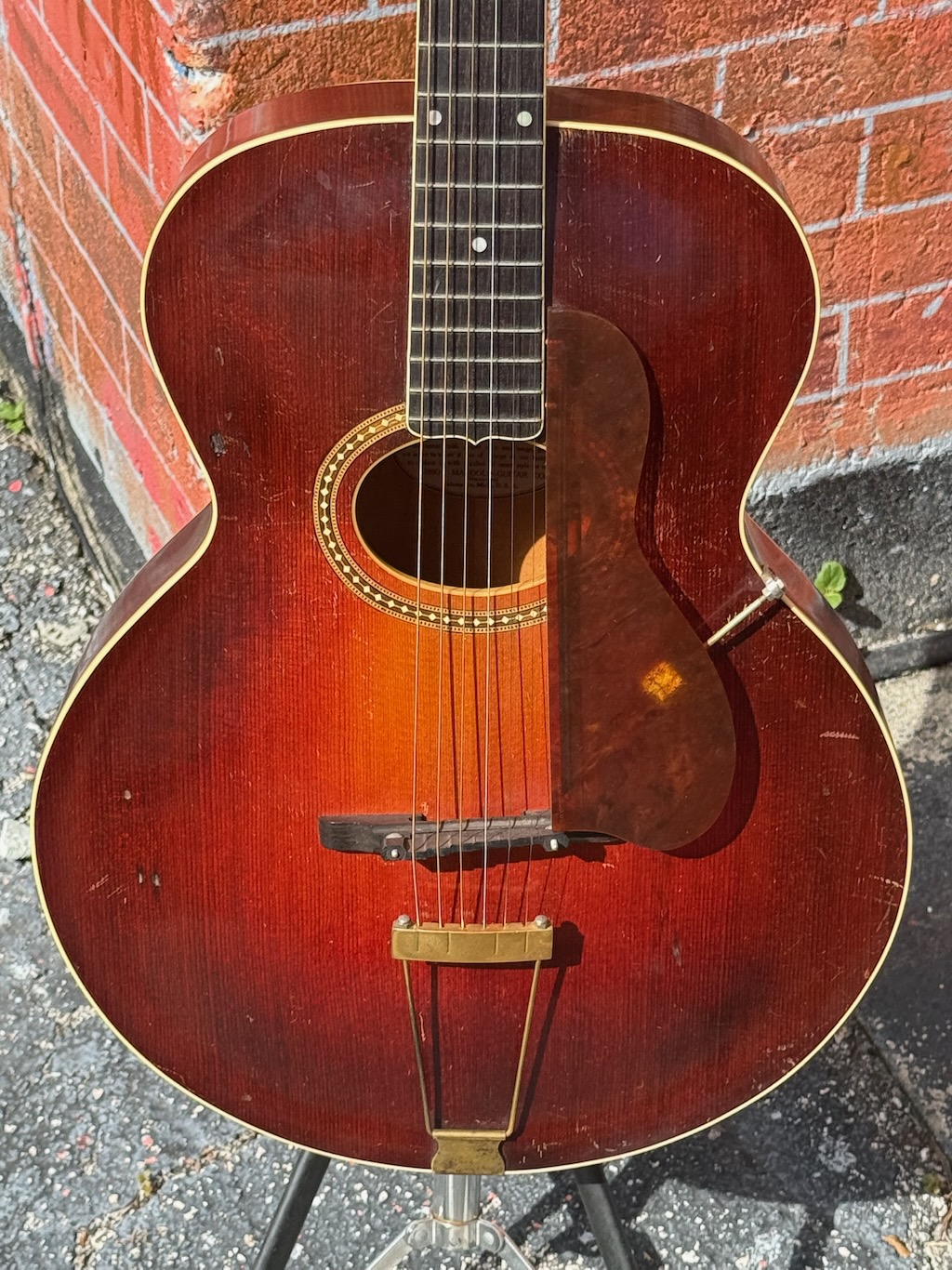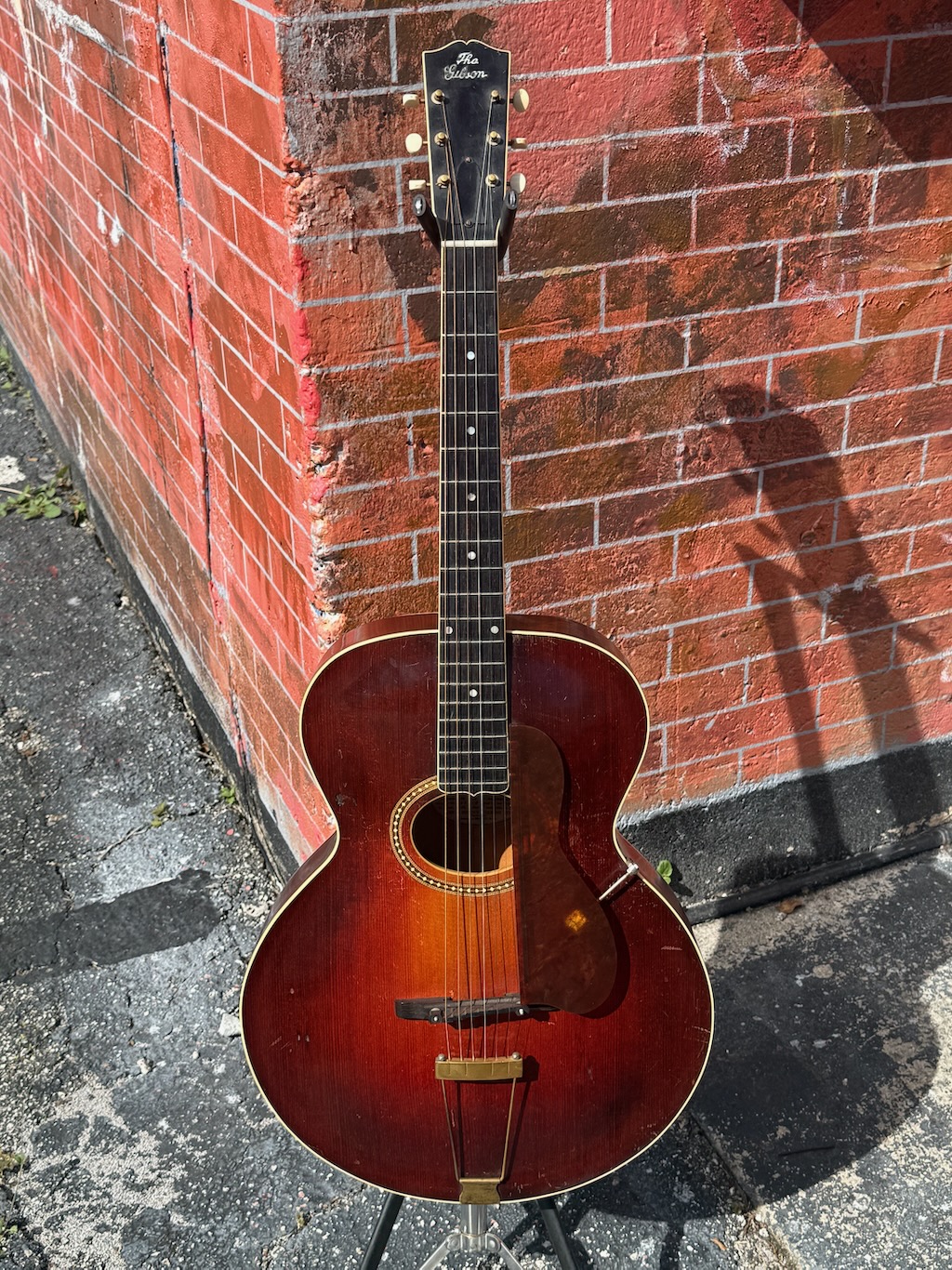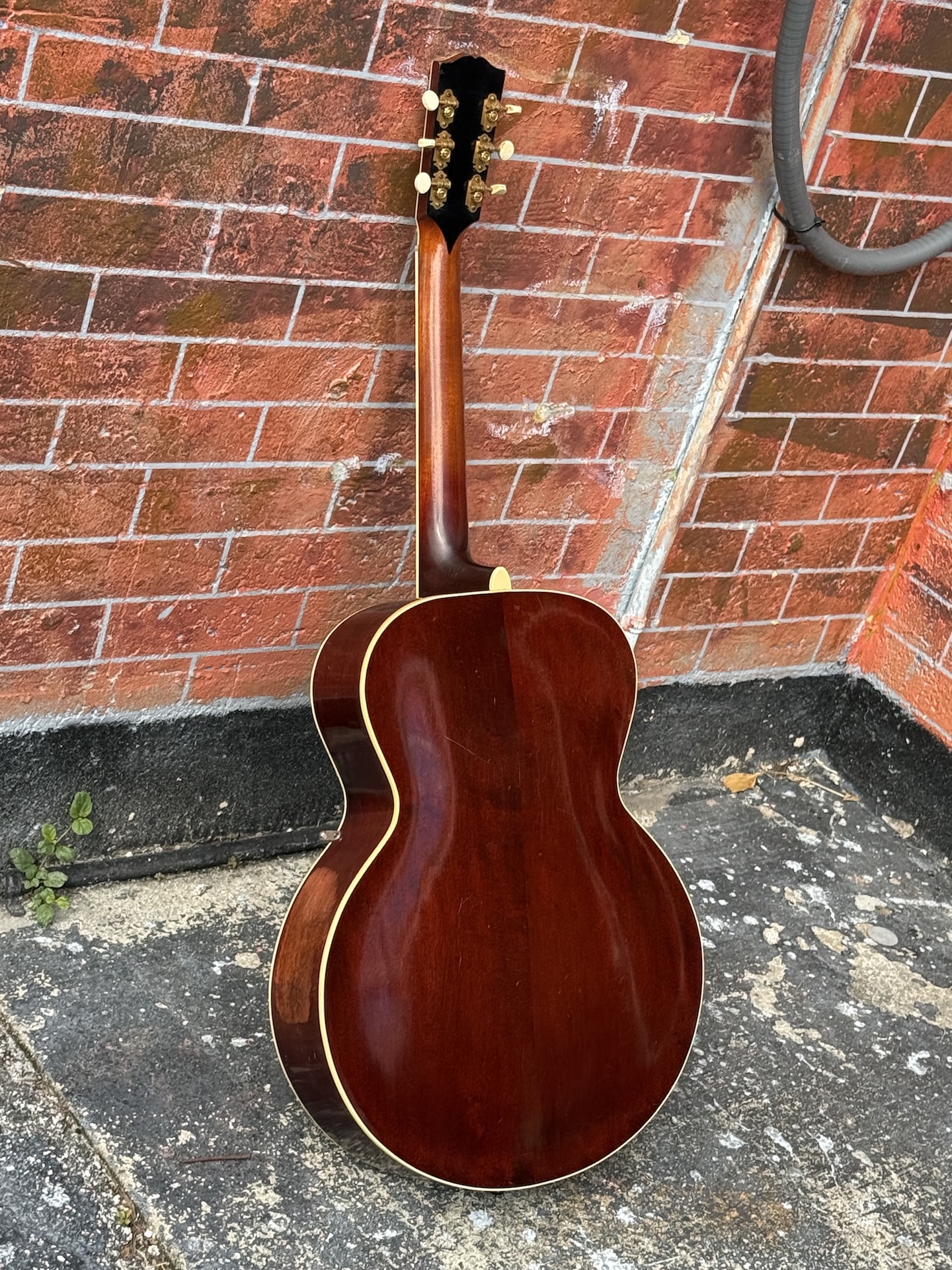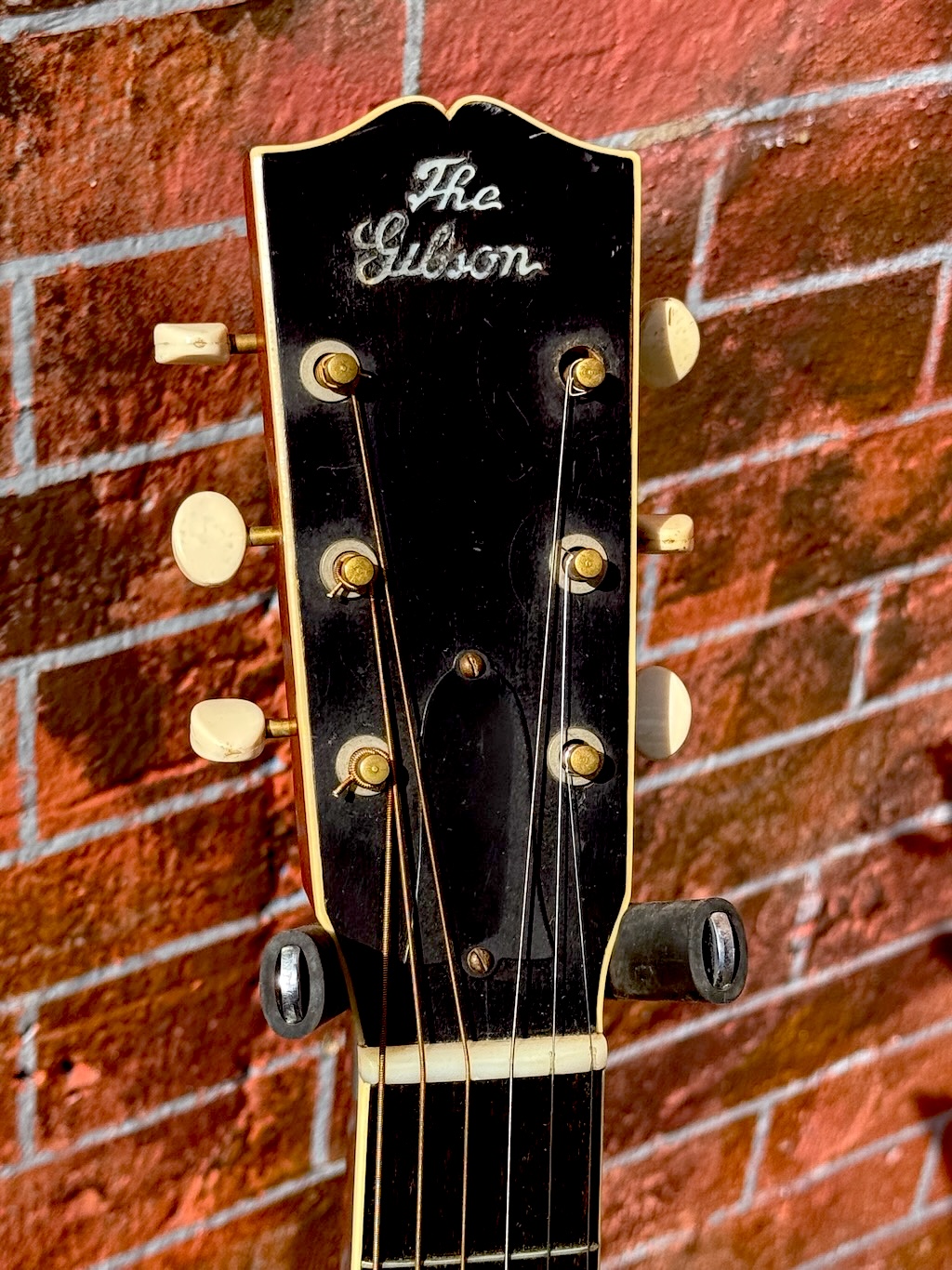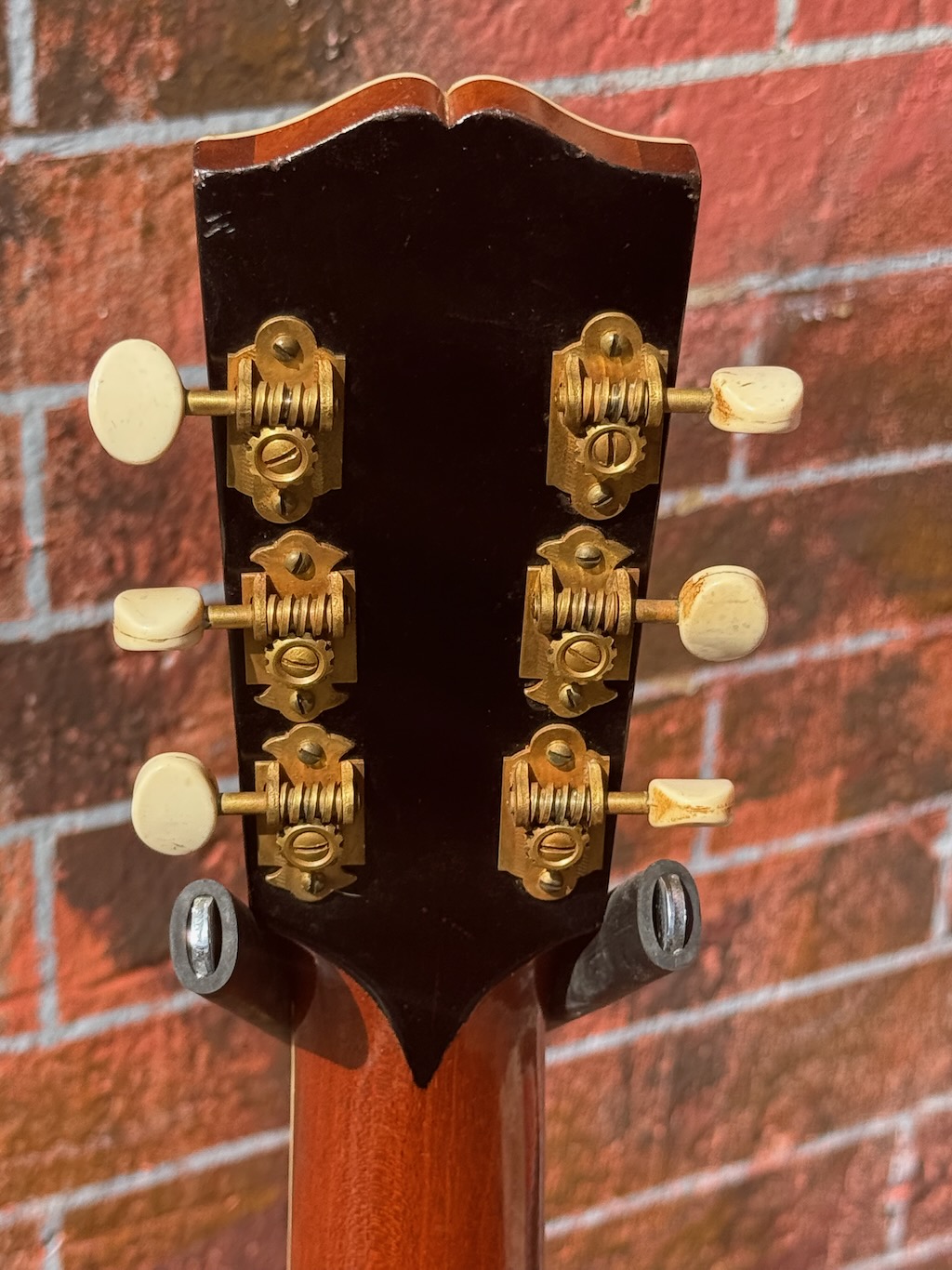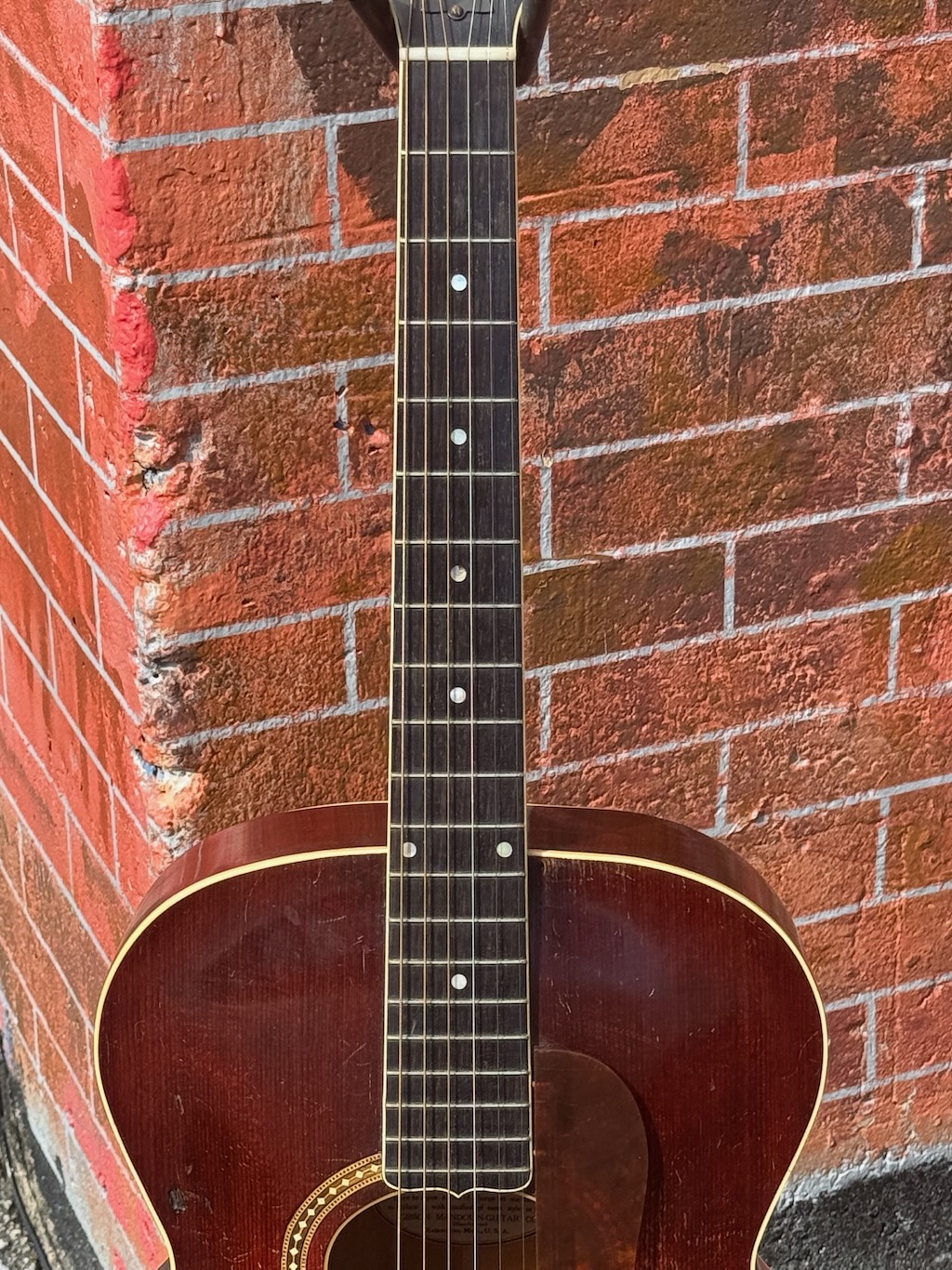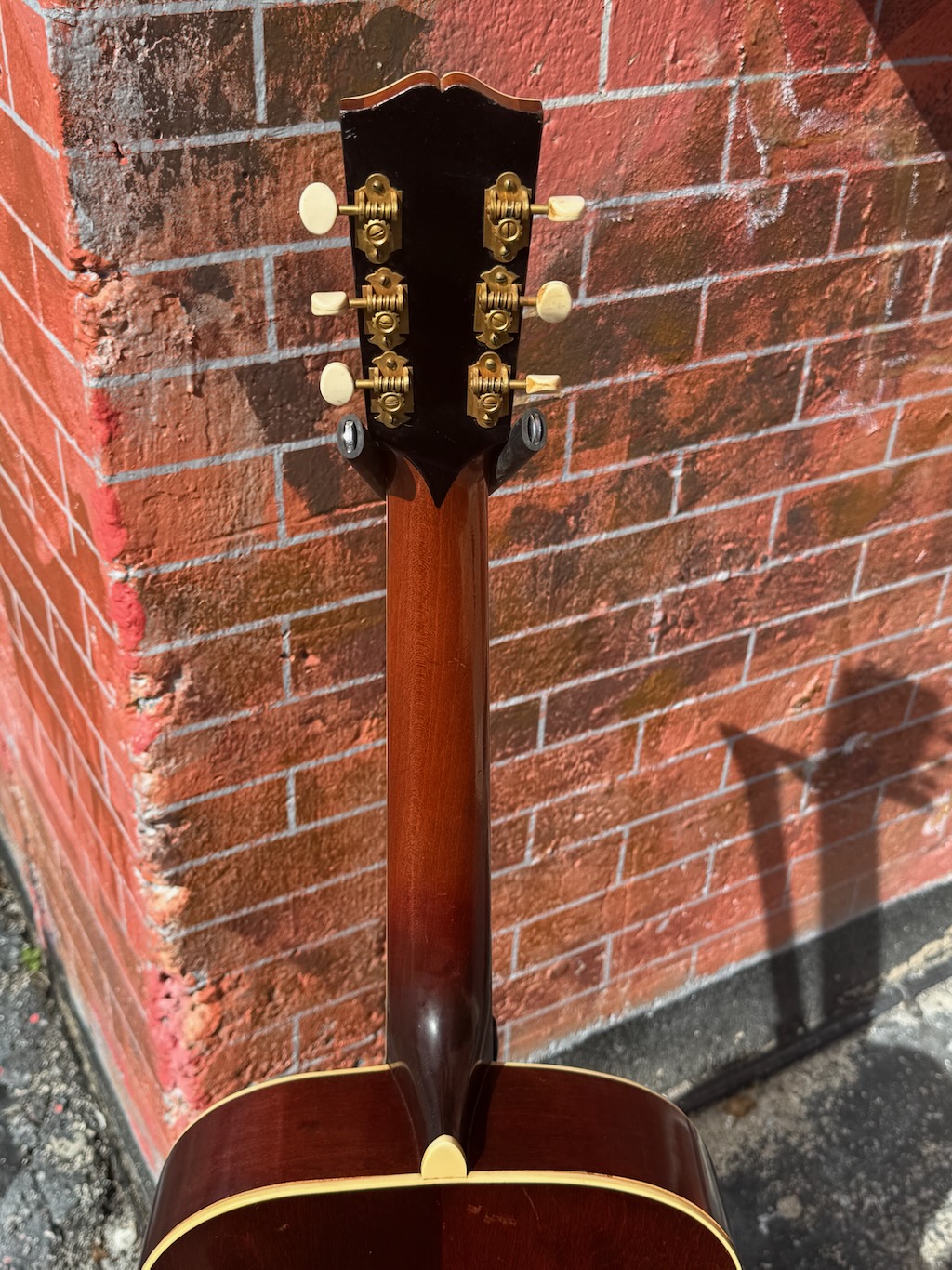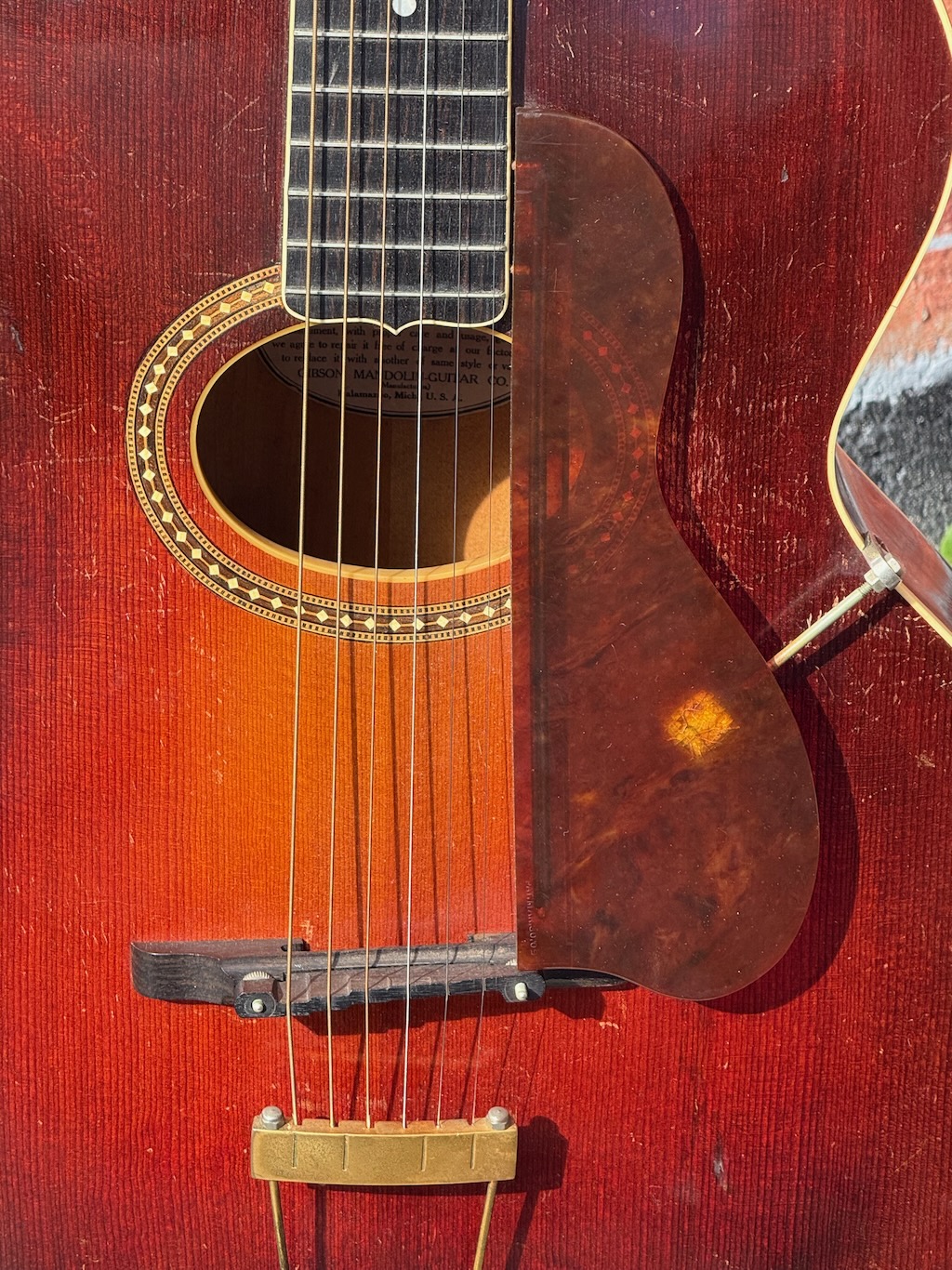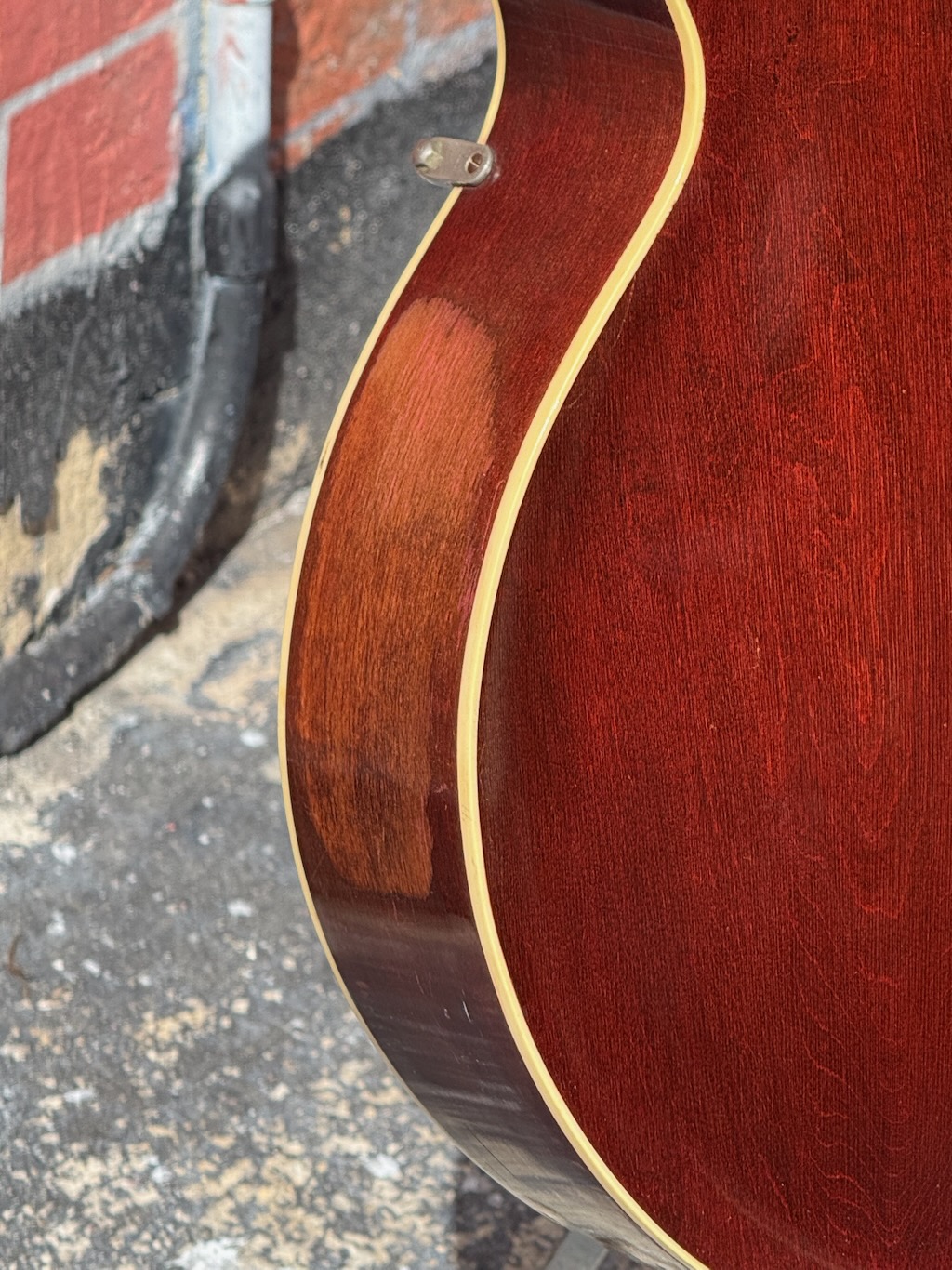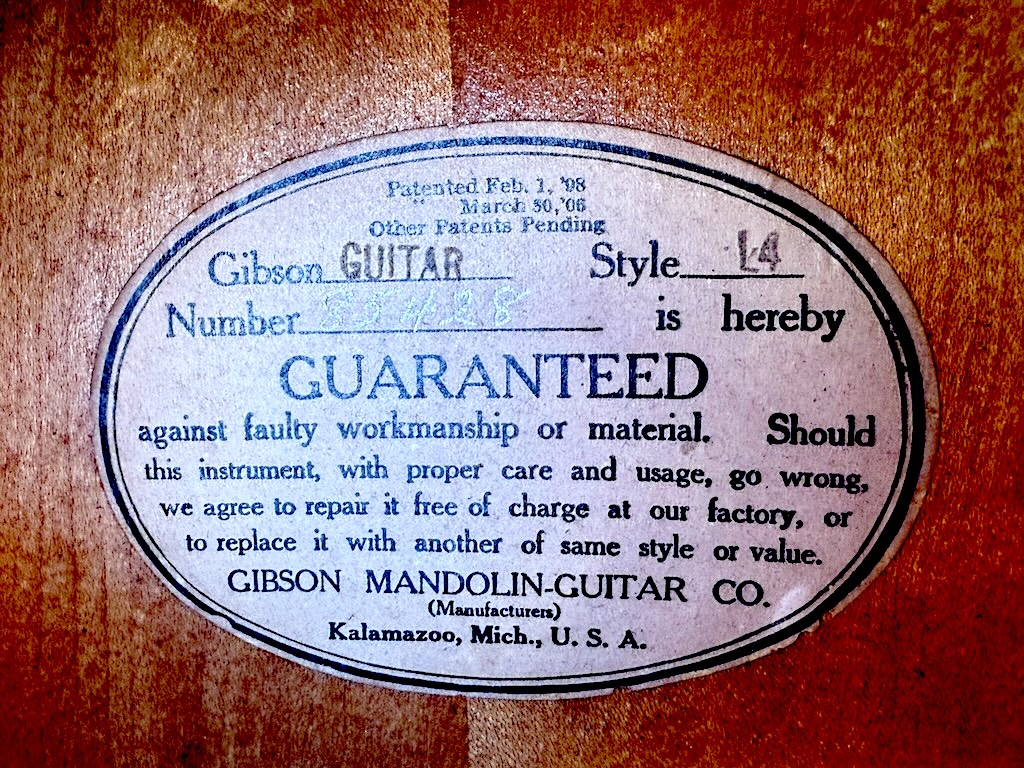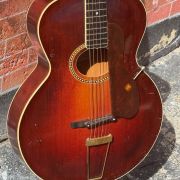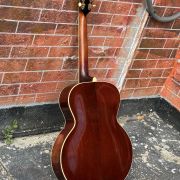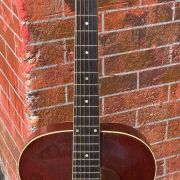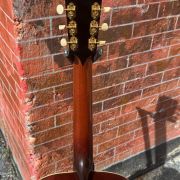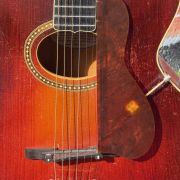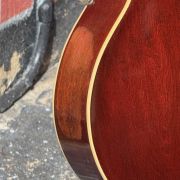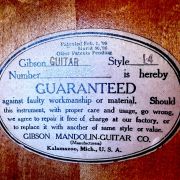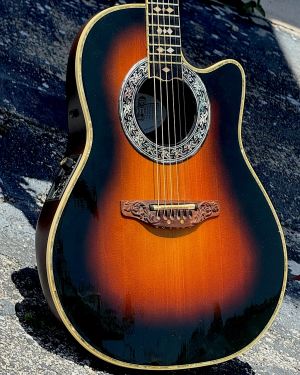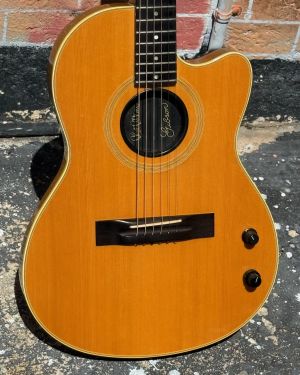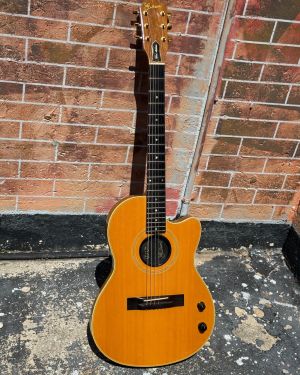- Home
- Flat Top Guitars
- 1928 Gibson L-4
1928 Gibson L-4
| Year | 1928 |
|---|---|
| Make | Gibson |
| Model | L-4 |
| Condition | Excellent |
Description
This is a very rare & all original 1928 Gibson L-4 in its stunning original light Sunburst finish w/its amazing arched top w/its oval sound hole ! This top line 16″ guitar has a fat neck w/a bound dot inlaid ebony fingerboard w/its extended fancy end where it meets the body. It’s hard to find an all original example like this still sporting its original gold tuners, bridge, tortoise pickgard & gold tailpiece. It’s got no cracks & a very straight neck. All bindings are perfect & all parts dated by the factory are still on board. Even its original hand written serial #’d white oval label is perfectly intact. These last late 20’s 1st issue arched top acoustics are some of the most deco stuff ever out there. It’s nice to find one so unaffected by time as this one. Its truly exceptional original shape & comes in a generic soft case.
I’ve owned and played many archtops from the 20s and 30s, and this has got to be one of the most comfortable to play and best sounding archtops from the era. The tone is crystal clear, full bodied, and projects surprisingly well. The tone of this guitar is shaped by it’s unique features:
- Birch back and sides which are warmer and more balanced than Maple
- Oval soundhole which produces more warmth and sweetness than round soundholes
- 12 fret neck which is warmer, fuller, and more resonant than 14 fret necks
These features in addition to the wide round profile neck (as opposed to earlier v shaped necks) makes it a difficult guitar to put down. Neck is nice and straight and has been set up professionally with an excellent angle.
Much can be said about the L4s from the 20s and 30s, but there are a few things that really set this L-4 apart. The 1920s and 30s were a time of intense transition for Gibson. The early 20s saw Lloyd Loar introduce radical improvements to the Gibson manufacturing process that elevated the quality of all Gibson instruments to a new height, then the Great Depression hit in 1929 and high quality instruments became a luxury most Americans couldn’t afford. Gibson adjusted by bringing down the price of their instruments in the early 1930s and they started cutting some corners to make the price cut more feasible.
When this L-4 was built, the following changes were already underway and were about to become the new norm:
- Round soundholes had almost entirely replaced oval soundholes (1929)
- Ornate rosettes were replaced with simpler designs (1929)
- 12 fret neck was phased out for 14 fret neck (1929)
- The Gibson headstock was replaced with “Gibson” (1931-1932)
- Birch back and sides was replaced with Maple (~1933)
- Stinger on back of headstock went away (1929-1930)
You may also Like


